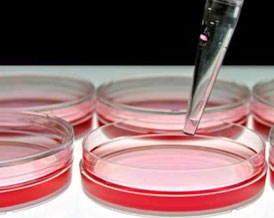
Scenario 1: Jake needs a flask of MCF-7 cells for an assay, so he sends an email to the graduate student listserv asking for cells. Melissa replies that she has an extra flask of cells that she could share. Jake happily accepts the cells and begins his experiment.
Scenario 2: Michael passaged his cells yesterday and, according to the protocol, was supposed to plate cells today for treatment. However, his previous experiments were delayed, so he decides to plate them tomorrow instead. The cells look healthy, so it should be ok.
What is wrong with the above scenarios? These actions may seem harmless, but they could be the cause of variability, leading to irreproducible results.
Irreproducible results are a big problem, especially in clinical research. A study in 2011 tried to reproduce published preclinical data in the field of oncology and found that only 20–25% of studies could be reproduced (1). Another study tried to verify findings in 53 novel “landmark” studies, including new approaches to target cancer. Only 6 (11%) out of the 53 studies were reproducible (2). The inability to reproduce published data has detrimental effects on drug discovery. Time, effort and money are often wasted when early-stage cell-based assays cannot be repeated. Among the many contributors of irreproducibility, variability in cell culture may be the most prominent.
So what is the cause of cell culture variability and how can we reduce it? Terry Riss, global strategic marketing manager at Promega, has some good advice. In his 2017 talk presented at the Assay Guidance Manual Workshop (sponsored by the NIH), Terry explains the nature of cell cultures and their potential to phenotypically “drift” after several passages. This drift occurs because any growth advantage of the cells will become predominant over time, causing changes in cell population. Ways to limit this drift include limiting the number of passages and standardizing cell culture conditions and handling procedures. Neglecting small details in handling procedures could cause inadvertent changes in cell population. For example, incomplete trypsinization may actually result in selection for loosely adherent cells.
Here are a few other tips from Terry on establishing standard operating procedures for cell culture that could help reduce variability:
Obtain cells from trusted sources
Studies have shown that 18–36% of cell-lines have been misidentified, so don’t assume your cells are what you think they are. Obtaining cells from the lab next-door is not recommended (Sorry, Jake!) Instead, make sure you obtain cells from a trusted source that performs cell-line authentication, such as the American Type Culture Collection (ATCC). Another option is to authenticate your cell-line every time you receive a new cell-line. Many academic facilities and commercial providers, such as the ATCC, provide cell-line authentication services. Learn more about cell-line authentication in the Assay Guidance Manual.
Perform routine testing for contamination
Bacteria and yeast are common contaminants, especially in antibiotic-free media, and are relatively easy to detect. Mycoplasma, however, are much harder to spot and could remain unnoticed for a long time, causing changes in cells that affect experimental results. Therefore, it is important to perform routine testing.
Use consistent culture conditions
Any kind of variability in culture conditions could potentially affect your results. For example, the density of cells in a stock flask could affect the responsiveness of cells when used in an assay. Another variability is the time of assay from last passage. This is because energy sources in media, such as glucose and glutamine, gradually become depleted while producing lactate and glutamate, resulting in changes in pH level. To reduce variability, cell density and time from passage should be consistent for every experiment. (Sorry, Michael!)
Use cryopreserved cells for cell-based screening
A good way to reduce variability in cell-based screening is to use the thaw-and-use frozen stock approach. This involves freezing a large batch of “stock” cells, then performing quality control tests to ensure they respond appropriately to treatment. Then whenever you need to perform an assay, just thaw another vial of cells from that batch and begin your assay—just like an assay reagent! This approach eliminates the need to grow your cells to a specific stage, which could take days and introduce more variability.
Control for changes in cell number
Cell numbers often change during an experiment due to cell proliferation or death. So when you see a decrease in total reporter gene levels after drug treatment, is it because gene expression dropped or is it because your cells are dying? This question can easily be answered by multiplexing your experiment with real-time assays that measure live or dead cells in the same assay well.
References:
- Prinz, F. et al. (2011) Believe it or not: how much can we rely on published data on potential drug targets? Nature Reviews Drug Discovery. 10, 712
- Begley, C.G., and Ellis, L.M. (2012) Drug development: Raise standards for preclinical research. Nature. 283, 531–533
Latest posts by Johanna Lee (see all)
- Microfluidic Organoids Could Revolutionize Breast Cancer Treatment - March 25, 2025
- Bacteria From Insect Guts Could Help Degrade Plastic - January 28, 2025
- A Diabetes Drug, Metformin, Slows Aging in Male Monkeys - December 19, 2024
